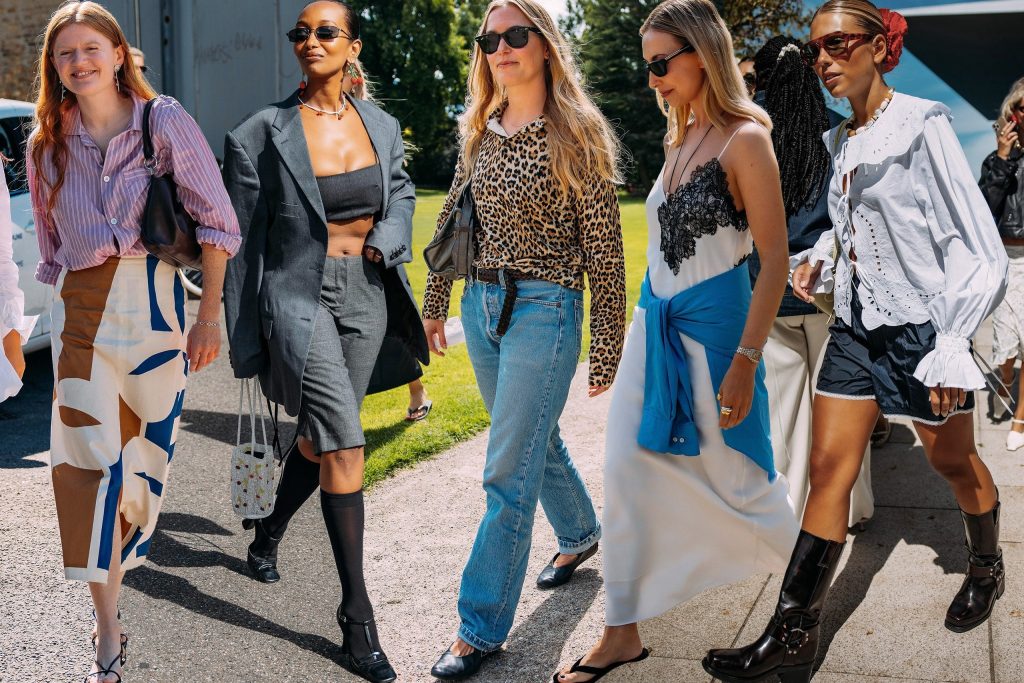Layering is one of the most effective ways to create stylish, functional, and weather-appropriate outfits. It not only keeps you warm in colder months but also adds depth, texture, and personality to your look. However, layering can be tricky if you don’t know how to combine pieces effectively. The right layers can transform a simple outfit into something polished and fashionable, while the wrong layers can make you feel bulky or uncomfortable.
In this article, we’ll guide you through the art of layering clothing like a fashion pro. From choosing the right fabrics to experimenting with different styles and proportions, we’ll help you master the layering technique and elevate your wardrobe to the next level.
- Start with the Basics: Understanding Layering
Layering is about more than just piling on clothes. It’s about creating a balanced look that feels cohesive, stylish, and functional. A well-layered outfit typically consists of three key components:
- Base Layer: This is the first layer that touches your skin, such as a screen printed t-shirt, tank top, or long-sleeve shirt. The base layer is usually made of a breathable, comfortable fabric that wicks away moisture, like cotton, merino wool, or thermal materials.
- Middle Layer: The middle layer adds warmth and structure. It can include items like sweaters, button-down shirts, or cardigans. The goal of the middle layer is to add insulation while still allowing for movement.
- Outer Layer: The outer layer is your jacket, coat, or coatigan—whatever serves as the final piece of your outfit to provide warmth, protection from the elements, and style. Common outer layers include blazers, trench coats, parkas, and leather jackets.
Understanding the purpose of each layer is crucial when layering clothing effectively. The key is balancing both functionality (such as warmth or weather protection) and style (by choosing pieces that work well together).
- Play with Proportions
One of the best ways to layer clothing like a fashion pro is by playing with proportions. Combining different lengths, fits, and silhouettes can create visual interest and make your outfit stand out. Layering allows you to create outfits that have depth and dimension, making you look more put-together and stylish.
How to Play with Proportions:
- Balance Oversized with Fitted: Pairing oversized pieces with more fitted clothing is an effective way to achieve a balanced look. For instance, wear a loose, oversized sweater over skinny jeans or leggings. Conversely, layer a fitted turtleneck under an oversized blazer to create a sleek, polished look.
- Experiment with Lengths: Mix and match different lengths to add intrigue. A long cardigan over a short dress or shirt with a longer coat can create a chic, layered effect.
- Layer with Structure: Adding structured outer layers, like a blazer or tailored jacket, to more relaxed or flowy pieces helps maintain a refined shape while still allowing you to layer comfortably.
By playing with proportions, you can make each layer feel intentional and create an outfit that looks thoughtful and modern.
- Stick to a Color Palette
When layering, it’s important to create a cohesive look by choosing pieces that complement each other in terms of color. Stick to a color palette that aligns with your personal style and creates a harmonious outfit.
How to Stick to a Color Palette:
- Neutrals First: Start with neutral colors such as black, white, gray, beige, or navy as your base and middle layers. These shades are versatile and timeless, making them easy to mix and match. They also create a solid foundation for bolder colors or patterns in your outer layers.
- Add Accents: Once you have your neutral base, add one or two accent colors to your outer layers or accessories. A bold scarf, a colored coat, or a vibrant handbag can add pops of color without overwhelming your outfit.
- Monochromatic Looks: Consider creating a monochromatic outfit where all layers are in varying shades of the same color. This creates a sleek, cohesive look. For example, you could layer a light gray sweater with a darker gray coat and finish with a charcoal gray scarf.
The goal of layering is to create a well-balanced, flattering outfit, and sticking to a color palette ensures that your layers work well together without clashing.
- Mix Textures for Added Depth
Layering isn’t just about adding more pieces—it’s also about creating visual interest through texture. Mixing different textures adds dimension to your outfit and makes the layers stand out. A mix of smooth, soft, rough, and shiny fabrics can create a stylish, balanced look.
How to Mix Textures:
- Knits with Leather: Combine a chunky knit sweater with a leather jacket for an edgy yet cozy look. The contrast between the soft knit and the structured leather creates an interesting textural balance.
- Silk and Wool: Layer a silk blouse under a wool coat for a polished look that combines softness with structure. The silk adds a touch of luxury, while the wool provides warmth.
- Cotton and Denim: A denim jacket layered over a cotton shirt or T-shirt is an easy, timeless combination that combines casual comfort with durable material.
When mixing textures, aim for contrast. For example, combine a soft wool sweater with a sleek leather handbag, or a fluffy scarf with a tough denim jacket. Mixing fabrics in this way keeps your outfit dynamic and interesting.
- Layering Accessories: Hats, Scarves, and Jewelry
Accessories play an essential role in the layering game. They can add flair to your outfit, serve functional purposes (like keeping you warm), and even make your layers feel more cohesive.
Key Accessories for Layering:
- Scarves: A scarf is one of the most practical yet stylish layering pieces. It can be worn in a variety of ways—draped over your shoulders, knotted around your neck, or tucked into your jacket for warmth. Experiment with chunky knitted scarves for winter or lightweight scarves in spring and summer.
- Hats: A stylish hat can be both a fashion statement and a functional layer. Try a beanie for a casual look, or a wide-brimmed hat for a more sophisticated touch. Hats add texture and dimension to any outfit.
- Jewelry: Layering necklaces, bracelets, or rings can elevate your outfit and add a personal touch. Experiment with delicate necklaces layered together or bold chunky jewelry for a statement.
Accessories can be the final piece that pulls your entire layered outfit together, adding both style and functionality.
- Consider Weather and Seasonality
When layering, it’s essential to keep in mind the weather and seasonality. The amount of clothing you need to layer and the types of materials you choose will depend on the temperature and climate you’re dressing for.
Layering for Different Seasons:
- Winter Layering: In colder weather, you’ll want to layer for both warmth and style. Start with a thermal shirt or long-sleeve top as your base, followed by a sweater or cardigan, and top it off with a puffer jacket or wool coat. Don’t forget accessories like gloves and hats.
- Fall Layering: For fall, you can layer with lighter fabrics like cotton or knit sweaters. Pair a turtleneck under a denim jacket, or throw a lightweight scarf over a blouse. Leather jackets and cardigans are great transitional pieces for fall.
- Spring Layering: As the weather warms, you can transition to lighter layers like linen shirts and cotton jackets. A lightweight trench coat or denim jacket over a simple T-shirt is perfect for cool spring days.
- Summer Layering: Summer doesn’t always mean you can’t layer—light cardigans, chambray shirts, and thin kimonos are perfect for layering over tank tops or summer dresses without getting too hot.
The idea is to layer in a way that keeps you comfortable while allowing you to experiment with styles that match the season.
- Keep It Balanced
When layering, the most important rule is balance. Layering doesn’t have to be about piling on as many clothes as possible; it’s about choosing the right pieces that work together. When layering, aim for a balance of fit, textures, and colors that complement each other.
Tips for Balancing Layers:
- Avoid over-layering—too many pieces can look bulky. Focus on fewer layers that are versatile and practical.
- If you wear a heavy outer layer, like a coat, keep the layers underneath lighter to avoid overwhelming your frame.
- Keep accessories in check—don’t overdo it with too many statement pieces.
Conclusion: Mastering the Art of Layering
Layering is a powerful tool in the fashion world, allowing you to stay warm, comfortable, and stylish no matter the season. By focusing on versatile pieces, playing with proportions, and mixing textures, you can create dynamic and fashionable outfits that work for any occasion. Remember to keep things balanced and always consider the weather and seasonality when layering your clothes.





